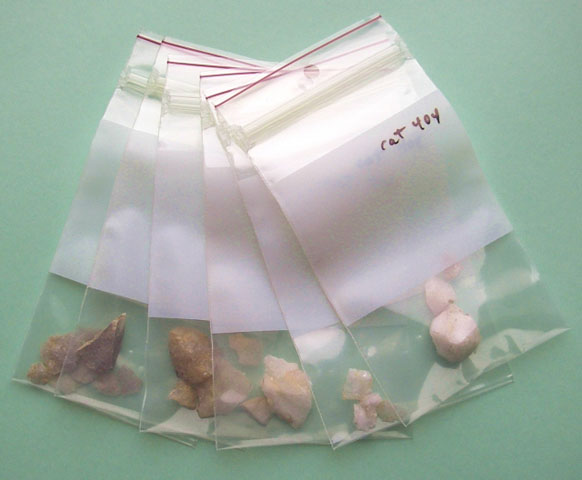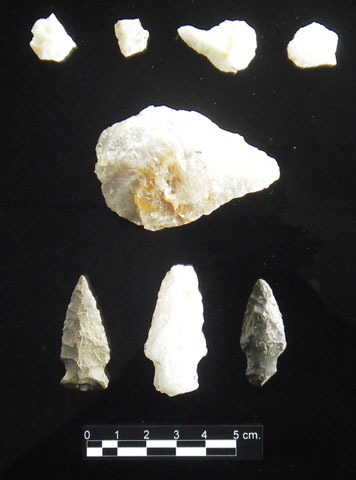|
Native Americans visited Davids Island over several thousand years. This time range is based on comparing the shapes, or styles, of certain artifacts found on the island to those from sites in the surrounding region where their age has been established through radiocarbon dating.
The Late Archaic Period
The oldest artifacts so far located on the island represent the Late Archaic period and probably date to around 3,500 to 4,000 years ago. During the Late Archaic period, Native Americans living around Long Island Sound were hunter-gatherers, making their living by collecting wild plants, hunting deer and other game, fishing and collecting shellfish. They moved periodically from one campsite to another to take advantage of different food resources seasonally available in different locations.
The land now comprising Davids Island was not always isolated from the New Rochelle shoreline, because in the past sea level in Long Island Sound was lower than it is today. Nonetheless, by Late Archaic times the area was probably already isolated from the nearby shore by a shallow channel of salt water.
Late Archaic artifacts from Davids Island include several spear or dart points made of quartz and chert. Both rock types are widely available as pebbles and cobbles in the lower Hudson Valley and around Long Island Sound. Characteristics of stone chips and other debris found in prehistoric Native American archeological deposits at Davids Island indicate that Native Americans often used pebbles and cobbles as sources for raw material for stone tool manufacture.
The Late Woodland Period
The Late Woodland period, about 500 to 1,000 years ago, may also be represented by Native American artifacts found at Davids Island. This period comprises the several centuries immediately before the arrival of European explorers and colonists in the 1500s and 1600s. Native Americans then residing in the area were probably the Siwanoys, the group traditionally said to be associated with the New Rochelle area.
Native American people of the Late Woodland period cultivated crops of corn, beans and squash in addition to using wild food sources. They lived in semi-permanent villages or hamlets and made pottery of earthenware. The discovery of a few sherds of this pottery during an earlier survey of Davids Island is the primary evidence that archeologists have found of Native American occupation of the island during this later period.
Why Are Shell Middens Absent?
Surprisingly, archeologists know of no deposits of clam or oyster shells on Davids Island created by the activities of Native Americans. These types of deposits are called shell middens, and they can often reveal a great deal about diet and other aspects of prehistoric Native American lifeways. Shell midden sites are common on the shores of Long Island Sound, and since Davids Island has more than 1.5 miles of shoreline, their absence on the island is striking.
There are several possible explanations for the lack of evidence of prehistoric Native American shellfish use on Davids Island. One possibility, which seems unlikely, is that there were no shellfish on the tidal flats in the shallow water around Davids Island. Another possibility is that natural erosion of the island’s shoreline over time removed ancient deposits of shells left by Native Americans. A third possibility is that there once were shell midden deposits on Davids Island, but they disappeared as later occupants altered and improved the terrain from the Colonial period to the 20th century.
|




 Prehistory
Prehistory


